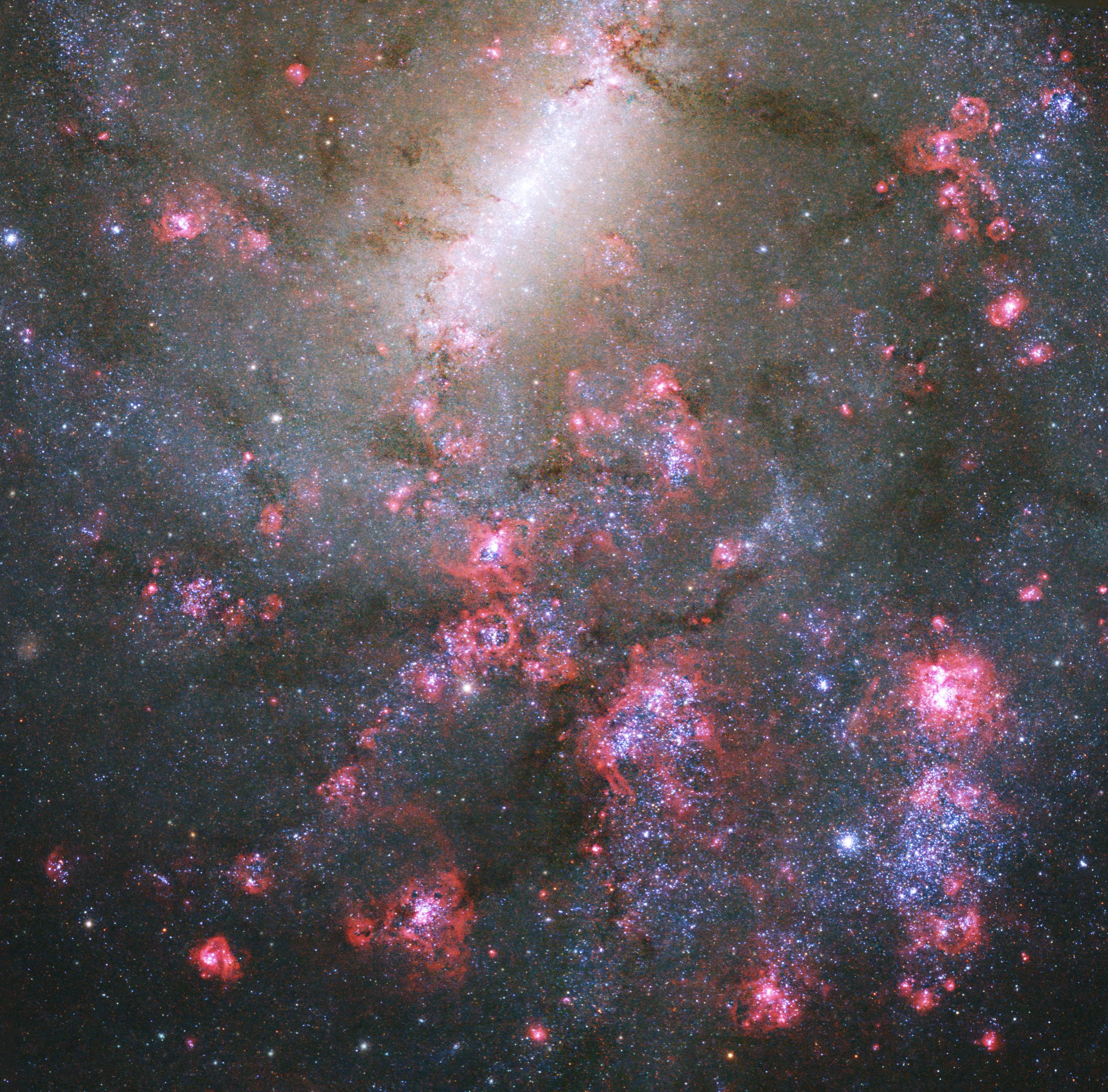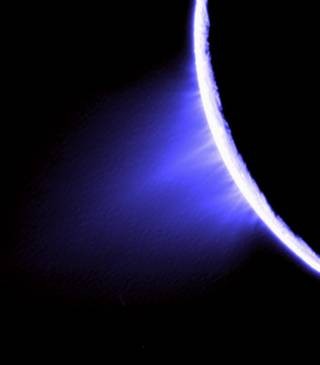Traveling a light year takes, well, one year traveling at the speed of light, which is approximately 186,000 miles per second. Understanding interstellar travel involves grappling with immense distances, and TRAVELS.EDU.VN can help you visualize and even plan for (hypothetically, of course!) journeys across such vast expanses. Explore the cosmos from the comfort of Earth and discover the cosmic timescale, interstellar distances, and speed of light travel.
1. What Exactly Is a Light-Year, and Why Does It Matter?
A light-year is the distance light travels in one Earth year, moving at approximately 186,000 miles (300,000 kilometers) per second, equating to about 5.88 trillion miles (9.46 trillion kilometers). It’s a cosmic yardstick for measuring the vast distances between stars and galaxies.
1.1. Light-Year as a Unit of Measurement
Think of a light-year as a cosmic ruler used to measure distances that are too vast to be comprehended in miles or kilometers alone. In our solar system, we often use astronomical units (AU), where 1 AU is the distance from the Earth to the Sun. However, when we venture beyond our solar system, light-years become essential. According to NASA, this unit helps astronomers and space enthusiasts alike conceptualize the distances in a way that’s proportional to the speeds and scales involved.
1.2. The Significance of Light-Years in Astronomy
Light-years are essential because they help us understand the structure and scale of the universe. For example, the Milky Way galaxy is about 100,000 light-years across. This measurement gives us a sense of the galaxy’s size and the distances between stars within it. Without light-years, these distances would be numbers too large for practical comprehension, hampering our ability to study and map the cosmos.
1.3. How Light-Years Help Us Visualize Space
To further illustrate, consider that the nearest star system to our own, Alpha Centauri, is about 4.37 light-years away. This means that the light we see from Alpha Centauri today started its journey over four years ago. These measurements aren’t just numbers; they offer a sense of time and perspective. By understanding light-years, we begin to grasp the sheer scale of the universe and the challenges involved in interstellar travel.
2. How Fast Is Light Really?
Light travels at a mind-boggling speed of approximately 186,000 miles (300,000 kilometers) per second. This speed is a fundamental constant in physics and plays a crucial role in how we understand the universe.
2.1. Speed of Light Compared to Everyday Speeds
To put the speed of light into perspective, consider that the fastest commercial airplanes travel at around 600 miles per hour. Light is nearly one million times faster. If you could travel at the speed of light, you could circle the Earth about 7.5 times in just one second.
2.2. Light’s Travel Time Within Our Solar System
Even within our solar system, the vast distances mean that light takes a significant amount of time to travel. For instance, sunlight takes about 8 minutes and 20 seconds to reach Earth. This means that we are always seeing the Sun as it was a little over eight minutes ago. When we look at planets further out, like Jupiter, sunlight takes about 43 minutes to reach it.
2.3. Implications of Light Speed for Space Exploration
The finite speed of light has profound implications for space exploration. When we look at distant stars and galaxies, we are seeing them as they were many years ago. For example, if we observe a galaxy 10 million light-years away, we are seeing it as it existed 10 million years in the past. This “light travel time” means that our telescopes are essentially time machines, allowing us to study the history of the universe. It also means that any communication with potential future interstellar missions would have significant delays.
3. How Long Would It Take to Travel One Light-Year with Current Technology?
With current technology, traveling one light-year is beyond our reach within a human lifetime. Our fastest spacecraft would take tens of thousands of years to cover such a distance.
3.1. Fastest Spacecraft and Their Speeds
One of the fastest spacecraft ever built is the Parker Solar Probe, which has reached speeds of around 430,000 miles per hour (700,000 kilometers per hour) as it orbits the Sun. While this is incredibly fast, it is still only about 0.064% of the speed of light.
3.2. Estimated Travel Time to the Nearest Star System
The nearest star system to us, Alpha Centauri, is about 4.37 light-years away. If we were to travel to Alpha Centauri using the Parker Solar Probe’s speed, it would take approximately 7,500 years to reach this star system.
3.3. Challenges of Achieving Light Speed Travel
Achieving light speed travel presents enormous technological and physical challenges. The energy required to accelerate a spacecraft to even a significant fraction of the speed of light is immense. According to theoretical physics, as an object approaches the speed of light, its mass increases, requiring even more energy to accelerate further. Additionally, the spacecraft would need to be shielded from collisions with interstellar dust and gas, which would have enormous destructive power at such speeds.
4. What Are the Theoretical Possibilities for Faster Than Light Travel?
While traveling at or beyond the speed of light is currently impossible with our existing technology and understanding of physics, several theoretical concepts offer intriguing possibilities.
4.1. Wormholes and Their Potential
Wormholes, also known as Einstein-Rosen bridges, are theoretical tunnels through spacetime that could connect two distant points in the universe. According to Einstein’s theory of general relativity, wormholes might exist, but their stability and traversability are highly questionable. To keep a wormhole open, exotic matter with negative mass-energy density would be required, a substance that has never been observed.
4.2. Warp Drives: Bending Spacetime
Warp drives are another theoretical concept that involves bending spacetime to allow a spacecraft to travel faster than light. The idea, popularized by the TV series “Star Trek,” involves contracting spacetime in front of the spacecraft and expanding it behind, creating a “warp bubble” that moves the spacecraft without actually exceeding the speed of light within the bubble. Like wormholes, warp drives would require vast amounts of energy and exotic matter, making them currently beyond our technological capabilities.
4.3. Quantum Entanglement and Teleportation
Quantum entanglement is a phenomenon where two particles become linked in such a way that the state of one particle instantly affects the state of the other, regardless of the distance between them. While this has been demonstrated in experiments, it cannot be used to transmit information faster than light. Quantum teleportation involves transferring the quantum state of one particle to another, but it still requires classical communication to complete the process, thus limiting the speed of information transfer.
5. Could We Ever Travel Close to the Speed of Light?
While achieving the speed of light remains a distant dream, traveling at a significant fraction of the speed of light might be possible with advanced technology.
5.1. Fusion Propulsion and Its Potential
Fusion propulsion involves using nuclear fusion reactions to generate enormous amounts of energy to propel a spacecraft. Fusion, the process that powers the Sun, releases vast amounts of energy when light atomic nuclei fuse to form heavier nuclei. If we could harness this energy efficiently, we could potentially achieve speeds that are a significant fraction of the speed of light.
5.2. Ion Drives: A Promising Technology
Ion drives use electric fields to accelerate ions, creating thrust. While ion drives produce very little thrust, they are extremely efficient and can operate continuously for long periods. Spacecraft equipped with ion drives can gradually accelerate to very high speeds. NASA’s Dawn spacecraft, for example, used an ion drive to travel to and orbit the asteroid Vesta and the dwarf planet Ceres.
5.3. Challenges and Future Prospects
Even with advanced propulsion technologies, traveling at a fraction of the speed of light presents significant challenges. The spacecraft would need to be shielded from high-energy particles and radiation in space. The effects of relativity, such as time dilation and length contraction, would also become significant. Despite these challenges, ongoing research and development in propulsion technology offer the potential for interstellar travel in the distant future.
 Distant galaxies observed by the James Webb Space Telescope
Distant galaxies observed by the James Webb Space Telescope
6. The Impact of Interstellar Travel on Humanity
Interstellar travel, even if it remains a distant prospect, has the potential to profoundly impact humanity.
6.1. Expanding Our Understanding of the Universe
Interstellar travel would allow us to explore other star systems and potentially discover new planets, life forms, and resources. This would revolutionize our understanding of the universe and our place in it.
6.2. Potential for Discovering Extraterrestrial Life
One of the most exciting possibilities of interstellar travel is the potential for discovering extraterrestrial life. If we could reach other star systems, we could search for planets that are habitable and potentially inhabited. The discovery of extraterrestrial life would have profound implications for science, philosophy, and our understanding of life itself.
6.3. The Future of Human Civilization
Interstellar travel could also play a role in the long-term survival of human civilization. By colonizing other planets, we could reduce the risk of extinction due to natural disasters or self-inflicted catastrophes on Earth. Interstellar colonization would be a monumental undertaking, but it could ensure the survival of our species for millennia to come.
7. How Does Distance Affect Our Perspective of the Universe?
The vast distances in the universe profoundly affect our perspective and understanding of cosmic phenomena.
7.1. Light Travel Time and Observing the Past
As mentioned earlier, light takes time to travel across the vast distances of space. This means that when we observe distant objects, we are seeing them as they were in the past. The farther away an object is, the further back in time we are looking. For example, when we observe a galaxy 10 billion light-years away, we are seeing it as it existed 10 billion years ago, when the universe was much younger.
7.2. Redshift and the Expanding Universe
The expansion of the universe also affects our perspective. As the universe expands, the light from distant galaxies is stretched, causing it to shift towards the red end of the spectrum. This phenomenon, known as redshift, is used by astronomers to measure the distances to galaxies and to study the expansion rate of the universe.
7.3. The Observable Universe
Due to the finite speed of light and the expansion of the universe, there is a limit to how far we can see. The observable universe is the portion of the universe that we can observe from Earth. The edge of the observable universe is about 46.5 billion light-years away. Beyond this distance, light from objects has not had enough time to reach us since the Big Bang.
8. Practical Considerations for Hypothetical Interstellar Travel
Even if interstellar travel remains theoretical for now, it’s useful to consider the practical aspects that would need to be addressed.
8.1. Sustaining Life on Long-Duration Missions
One of the biggest challenges of interstellar travel would be sustaining life on long-duration missions. Spacecraft would need to be equipped with closed-loop life support systems that can recycle air, water, and waste. Crews would need to be self-sufficient and able to grow their own food. Psychological factors would also be important, as crews would need to cope with long periods of isolation and confinement.
8.2. Radiation Shielding and Health Concerns
Space is filled with high-energy particles and radiation that can be harmful to human health. Interstellar spacecraft would need to be heavily shielded to protect crews from radiation exposure. Long-term exposure to radiation can increase the risk of cancer and other health problems.
8.3. Navigating Interstellar Space
Navigating interstellar space would also be a significant challenge. Spacecraft would need to be equipped with highly accurate navigation systems that can determine their position and velocity with extreme precision. They would also need to be able to detect and avoid obstacles such as asteroids and comets.
9. The Role of Science Fiction in Inspiring Space Exploration
Science fiction has played a significant role in inspiring space exploration and shaping our vision of the future.
9.1. How Science Fiction Influences Scientific Thinking
Science fiction often explores ideas and concepts that are beyond the realm of current scientific knowledge. By imagining these possibilities, science fiction can inspire scientists and engineers to think outside the box and pursue new avenues of research.
9.2. Examples of Science Fiction Concepts That Became Reality
Many technologies that were once considered science fiction have become reality. Examples include communication satellites, space stations, and virtual reality. Science fiction writers like Arthur C. Clarke and Isaac Asimov have accurately predicted technological advancements decades before they were developed.
9.3. The Ethical Considerations Raised by Science Fiction
Science fiction also raises important ethical considerations about the future of technology and society. Stories about artificial intelligence, genetic engineering, and space colonization often explore the potential consequences of these technologies and the ethical dilemmas they may create.
10. TRAVELS.EDU.VN: Your Gateway to Exploring Space (From Earth)
While we might not be booking interstellar flights just yet, TRAVELS.EDU.VN can take you on incredible journeys right here on Earth, offering experiences that ignite your curiosity about the cosmos.
10.1. Experiential Travel Options That Mimic Space Exploration
Consider a trip to the Atacama Desert in Chile, one of the driest places on Earth, offering landscapes that mimic the surface of Mars. Or, visit the Mauna Kea Observatories in Hawaii, where you can peer into the night sky through some of the world’s most powerful telescopes.
10.2. Educational Travel Programs Focused on Astronomy
TRAVELS.EDU.VN offers educational travel programs designed to deepen your understanding of astronomy and space science. These programs include guided tours of observatories, lectures by renowned astronomers, and hands-on workshops.
10.3. Planning Your Trip to Space-Themed Destinations with TRAVELS.EDU.VN
Let TRAVELS.EDU.VN help you plan your next space-themed adventure. We offer customized itineraries, expert advice, and seamless booking services. Contact us today to start planning your journey to the stars (or at least, to places that make you feel like you’re among them).
 Milky Way Galaxy
Milky Way Galaxy
FAQ: How Long for Us to Travel a Light Year?
1. What is a light-year?
A light-year is the distance light travels in one year, approximately 5.88 trillion miles.
2. How fast does light travel?
Light travels at about 186,000 miles (300,000 kilometers) per second.
3. How long would it take to travel one light-year with current technology?
It would take tens of thousands of years with our fastest spacecraft.
4. What is the nearest star system to Earth?
The nearest star system is Alpha Centauri, about 4.37 light-years away.
5. What are wormholes?
Wormholes are theoretical tunnels through spacetime that could connect distant points.
6. What is a warp drive?
A warp drive is a theoretical concept to bend spacetime and travel faster than light.
7. Could we ever travel close to the speed of light?
It might be possible with advanced technologies like fusion propulsion or ion drives.
8. What is fusion propulsion?
Fusion propulsion uses nuclear fusion reactions to generate energy for spacecraft.
9. How does distance affect our perspective of the universe?
Distance means we observe objects as they were in the past due to light travel time.
10. How can TRAVELS.EDU.VN help me explore space-themed destinations?
TRAVELS.EDU.VN offers customized itineraries and expert advice for space-themed travel.
Ready to explore the cosmos from the comfort of Earth? Contact TRAVELS.EDU.VN today!
Address: 123 Main St, Napa, CA 94559, United States
WhatsApp: +1 (707) 257-5400
Website: travels.edu.vn
Let us help you plan your next adventure!
